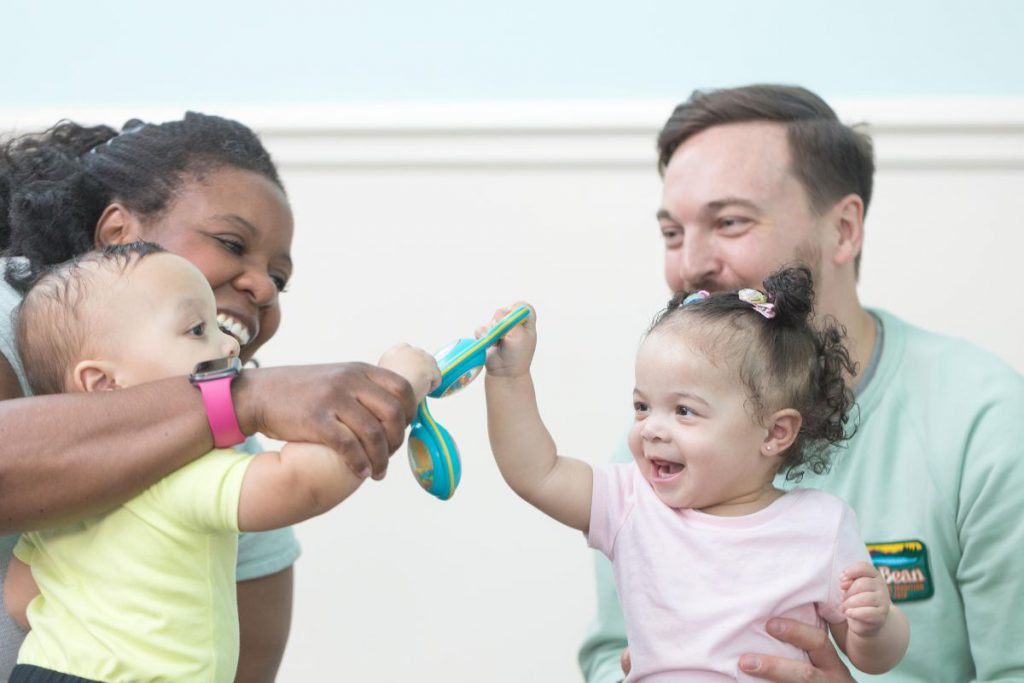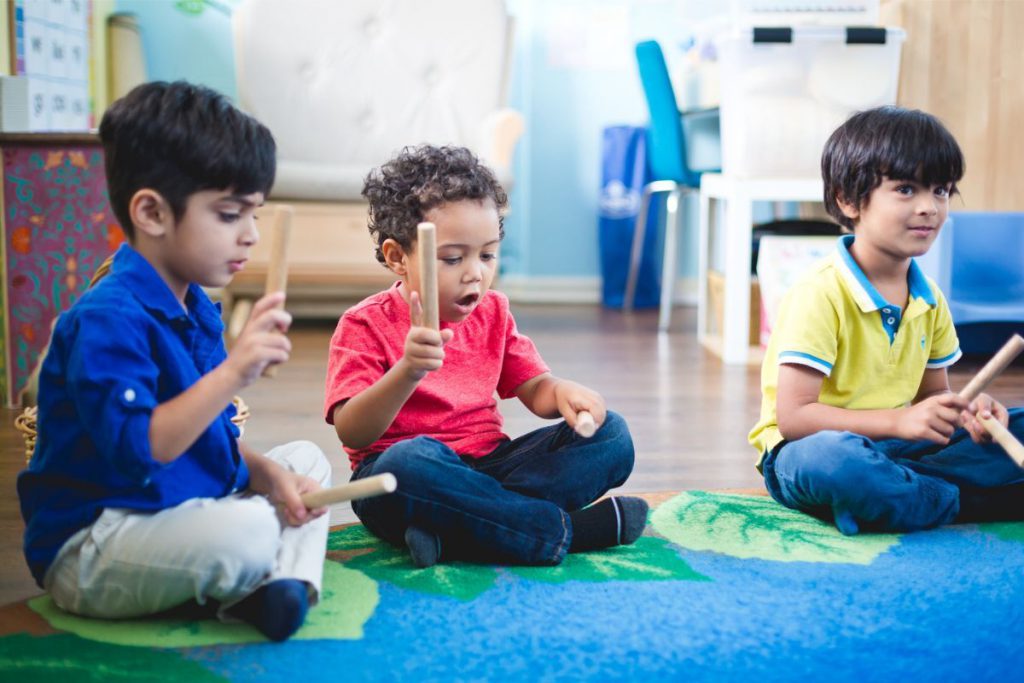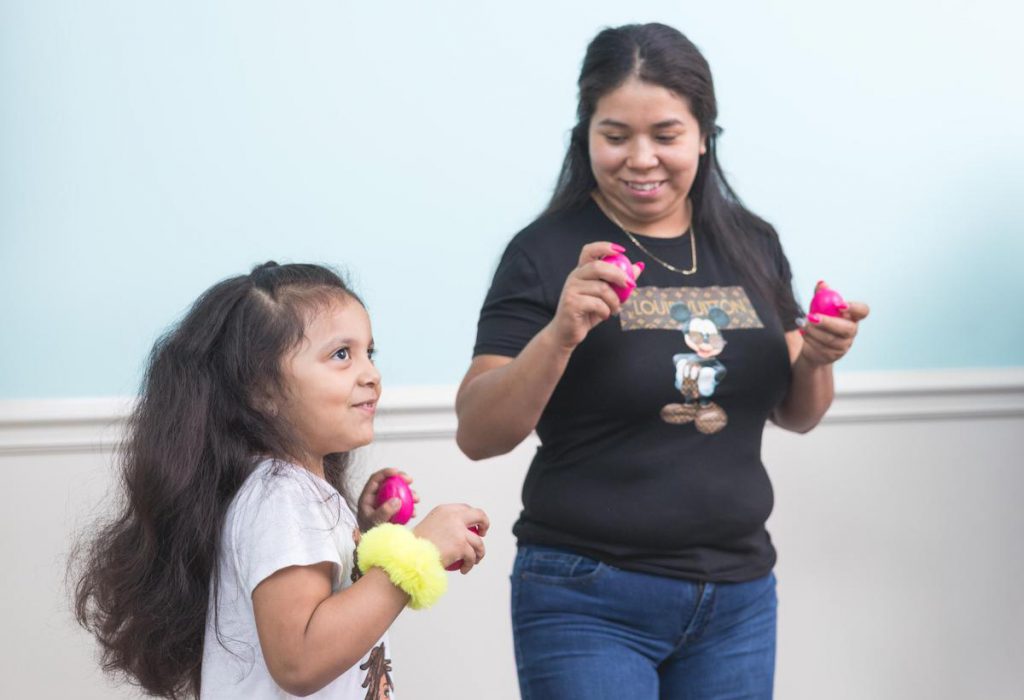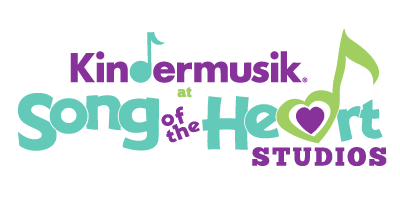Here is an excerpt from from Kindermusik International about how to use music to boost that social emotional learning that we are looking to provide for our children.
3 Easy Musical Activities to Support Social-Emotional Learning

1. Use simple rhythms or songs to connect children to one another.
Whether children and their families are tapping out beats with wooden spoons in the kitchen, or clapping with friends during circle time at school, they’re synchronizing their minds, bodies, and spirits with others.
And that is a key part of social-emotional learning…overcoming barriers to play together.
“Five Little Peas” (in our Food album on the Free Kindermusik App—download it on Apple or Google Play!) is a Kindermusik favorite for counting, tapping, turn-taking, and improvising.
Five little peas in a peapod pressed.
One grew,
Two grew,
And so did the rest!

Just imagine your kiddos popping up one by one in different ways—and celebrating each other—to the beat!
2. Try musical stop-and-go activities to expend energy and control movements.
One of the biggest challenges in early education right now is implementing move-to-learn philosophies. Desks come with age, but little bodies need lots of brain breaks and boosts to retain what they’re learning and control their movements when it’s time to be still.

Here’s an easy way to help little ones get the wiggles out while also teaching them how to self-regulate.
Play a song or instrument and have your child(ren) move around until you stop the music. They’ll learn the cues to start and stop their bodies, and have fun doing it!
You can use favorite music or find appropriate tracks on the Kindermusik app. Start with the album to your current unit to reap the benefits of repetition.
3. Play music that celebrates various cultures to enhance inclusivity.
You can never share multicultural tunes too early—children don’t start to fully put the pieces together until around age 5, but cultural awareness starts much earlier.
Even young toddlers recognize and delight in authentic musical sounds from around the world. And preschoolers can surprise you with intelligent questions about the traditions and histories that make us all special.
“Mi Caballo Blanco” (My White Horse) is a Chilean folk song that you can find in the free Kindermusik App. This is the perfect song for winding down by swaying to the music with a prop (like a scarf). For older kiddos, talk about the way the guitar is played or the different instruments used in the song (like the guiro) that might not be familiar to them. There are so many opportunities to play something new and grow from there!
Make music time a must for growing social-emotional learning.
Wherever you are, you can be intentional about infusing the power of joyful music that triggers a positive behavioral response. You’ll be amazed at what a little rhythmic connection will do to boost the social-emotional milestones you’re trying to meet.

